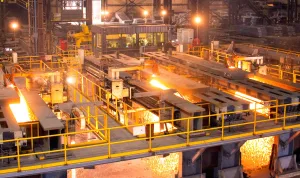Europe stands at the forefront of the global steel industry, boasting a rich heritage, advanced technologies, and a diverse array of producers, traders, and consumers. As a pivotal player in the steel market, Europe’s steel industry plays a crucial role in driving economic growth, innovation, and sustainability across the continent and beyond. In this comprehensive guide, we embark on a journey to explore the intricacies of the Europe steel market, uncovering its unique features, key players, and emerging trends, while providing valuable insights and strategies for success in this dynamic marketplace.
Understanding the Europe Steel Market Landscape:
Before delving into the specifics of the Europe steel market, it’s essential to gain a comprehensive understanding of the broader landscape of the region’s steel industry. Europe encompasses a diverse range of countries with varying levels of industrialization, steel production capacities, and market dynamics. From Germany and Italy to France, Spain, and beyond, each European nation brings its own strengths, challenges, and contributions to the region’s steel market. Understanding the historical context, regulatory environment, and market forces shaping the Europe steel market is crucial for investors, traders, and stakeholders seeking opportunities in this dynamic sector.
Key Features and Characteristics:
At the heart of the Europe steel market lie several key features and characteristics that distinguish it from other regions. These include:
- Advanced Technologies: Europe’s steel industry is known for its adoption of advanced technologies and sustainable practices, driving innovation and efficiency improvements across the value chain. From state-of-the-art blast furnaces and electric arc furnaces (EAF) to continuous casting processes and recycling technologies, Europe’s steel producers are at the forefront of technological advancements in the global steel industry.
- Diverse Product Portfolio: Europe produces a diverse array of steel products to meet the needs of various industries and applications. From flat products such as hot-rolled coil (HRC) and cold-rolled coil (CRC) to long products such as beams, bars, and wire rods, Europe’s steel market offers a comprehensive portfolio of products catering to automotive, construction, infrastructure, and manufacturing sectors.
- Sustainable Practices: With a strong focus on environmental sustainability and corporate responsibility, Europe’s steel industry is committed to reducing carbon emissions, minimizing waste, and promoting circular economy principles. Through investments in clean energy technologies, resource efficiency, and carbon capture initiatives, Europe’s steel producers are leading the transition towards a low-carbon future.
Market Dynamics and Emerging Trends:
The Europe steel market is influenced by a myriad of factors that shape its dynamics, including:
- Economic Trends: Economic conditions, such as GDP growth, industrial output, and construction activity, have a significant impact on steel demand and pricing trends in Europe. Economic recovery, infrastructure investments, and urbanization drive steel consumption across various end-use sectors.
- Trade Dynamics: Europe’s steel market is interconnected with global trade flows, with imports and exports playing a crucial role in shaping supply-demand dynamics and pricing trends. Trade policies, tariffs, and anti-dumping measures impact the competitiveness of European steel producers in domestic and international markets.
- Regulatory Environment: Regulatory frameworks, environmental policies, and sustainability standards influence the operations and competitiveness of Europe’s steel industry. Compliance with stringent regulations, such as the European Union Emissions Trading System (EU ETS) and circular economy directives, drives innovation and investment in sustainable steel production technologies.
Conclusion:
In conclusion, the Europe steel market represents a dynamic and resilient sector within the global steel industry, offering a wealth of opportunities for investors, traders, and stakeholders alike. By understanding the unique features, key players, and emerging trends in the Europe steel market, market participants can navigate the complexities of this dynamic marketplace with confidence and precision, unlocking new avenues for growth and prosperity. With its advanced technologies, diverse product portfolio, and commitment to sustainability, Europe’s steel industry is well-positioned to continue driving innovation, competitiveness, and economic development across the continent and beyond.



